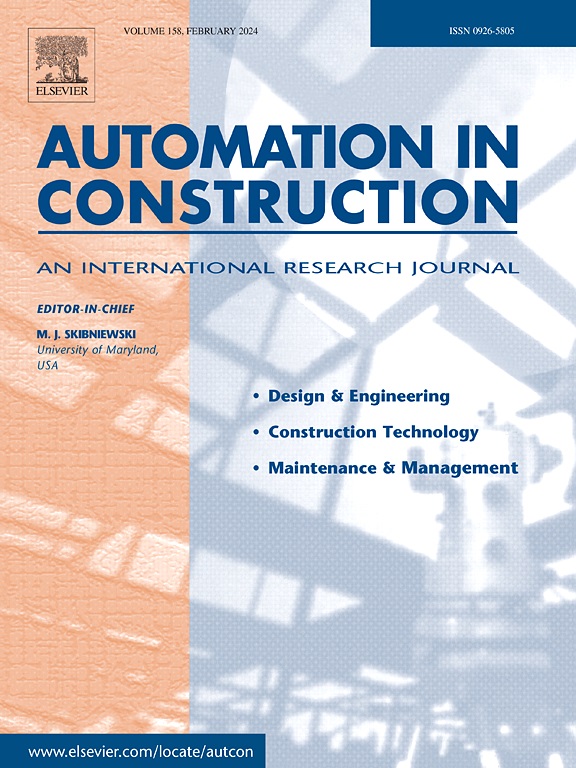工业化建筑中人工智能驱动参数生成设计的生命周期框架
IF 9.6
1区 工程技术
Q1 CONSTRUCTION & BUILDING TECHNOLOGY
引用次数: 0
摘要
在建筑、工程和施工(AEC)行业中,设计过程仍然分散在建筑、结构和机械领域,限制了整个建筑生命周期的集成和优化机会。本文研究了如何利用人工智能为工业化建筑中的参数化生成设计创建一个综合框架,该框架集成了多个设计学科和优化标准。该方法采用大型语言模型(llm)支持的知识图谱问答(KGQA)获取设计需求和约束,实现多目标优化算法来平衡竞争标准,并建立三层优先级结构来解决跨领域设计过程中的冲突。该框架在实际案例研究中证明了显著的改进,实现了生命周期成本降低15.8%,能耗降低21.2%,并显著减少了初步设计建模时间。这些发现为寻求实现人类-人工智能协作设计工作流的AEC从业者提供了有价值的见解,并说明了将特定领域知识与先进的人工智能系统集成的途径。本文章由计算机程序翻译,如有差异,请以英文原文为准。
Lifecycle framework for AI-driven parametric generative design in industrialized construction
In the Architecture, Engineering, and Construction (AEC) industry, design processes remain fragmented across architectural, structural, and mechanical domains, limiting integration and optimization opportunities throughout building lifecycles. This paper investigates how artificial intelligence can be leveraged to create a comprehensive framework for parametric generative design in industrialized construction that integrates multiple design disciplines and optimization criteria. The methodology employs knowledge graph question answering (KGQA) enabled by large language models (LLMs) to acquire design requirements and constraints, implements multi-objective optimization algorithms to balance competing criteria, and establishes a three-tier priority hierarchy to resolve conflicts in cross-domain design processes. The framework demonstrates significant improvements in a real-world case study, achieving 15.8 % reduction in lifecycle costs, 21.2 % decrease in energy consumption, and significantly reducing preliminary design modelling time. These findings provide valuable insights for AEC practitioners seeking to implement human-AI collaborative design workflows and illustrate pathways for integrating domain-specific knowledge with advanced AI systems.
求助全文
通过发布文献求助,成功后即可免费获取论文全文。
去求助
来源期刊

Automation in Construction
工程技术-工程:土木
CiteScore
19.20
自引率
16.50%
发文量
563
审稿时长
8.5 months
期刊介绍:
Automation in Construction is an international journal that focuses on publishing original research papers related to the use of Information Technologies in various aspects of the construction industry. The journal covers topics such as design, engineering, construction technologies, and the maintenance and management of constructed facilities.
The scope of Automation in Construction is extensive and covers all stages of the construction life cycle. This includes initial planning and design, construction of the facility, operation and maintenance, as well as the eventual dismantling and recycling of buildings and engineering structures.
 求助内容:
求助内容: 应助结果提醒方式:
应助结果提醒方式:


